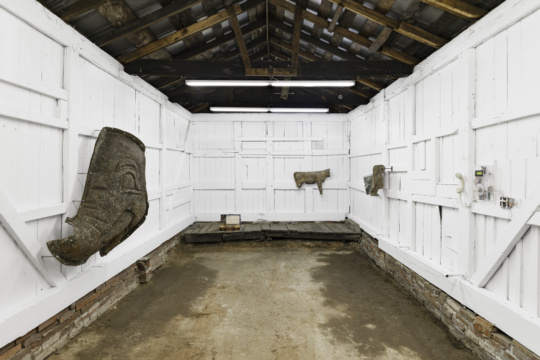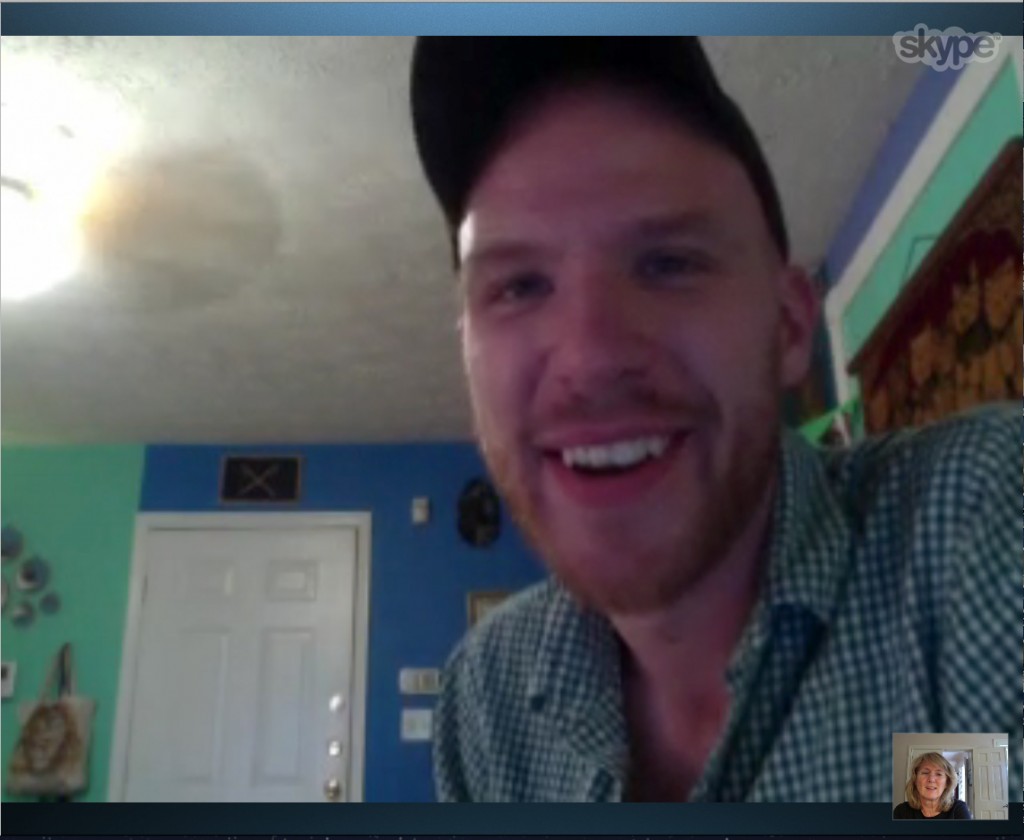
On August 26, artists Aubrey Longley-Cook and Sonja Rieger talked about their bodies of work that document important elements of contemporary drag culture. Longley-Cook, an artist and graduate of the Rhode Island School of Design, is using video, animation, and embroidery in his work on a series that follows the transformation of Jared Dawson to Lavonia Elberton. Another project of Longley-Cook’s involves a group cross-stitch workshop, animating images of RuPaul with embroidery. Sonja Rieger, a professor at the University of Alabama at Birmingham, created formal portraits of the participants of an African American drag show, the Platinum International Newcomers Pageant. She took a backdrop and lights into out-of-the-way clubs in Fairfield and Birmingham, Alabama. What follows are moments from their conversation.
—
Sonja Rieger: We were selected or paired for this interview because we both work with drag. We both have this unique personal connection to the people or the work that we’re doing. Yours is through watching Jared become Lavonia, and mine is through having an attendant from my parents’ nursing home ask me to photograph his pageant, and then I was placed in the dressing room to take the photographs for Dazzling so I didn’t see the pageant from the stage. So, we have these very personal or inside connections to the work, which makes our work a little bit different than some previous drag documentation. I think there’s more of a focus in other drag events on the flash, the fun, all that kind of stuff, and we’re seeing an inner situation.
Aubrey Longley-Cook: I think that makes a lot of sense, and that personal connection is certainly very important to my work. We’re documenting these queens because of that initial relationship.
SR: Right, it’s also that we see the identity that these individuals have. You know, I think you’re the first person working with drag that I’ve ever met who has such a personal connection, not seeing drag queens as other.
ALC: Right, like-minded others and taking the other out of the situation. It’s interesting that, [as I am] working through this project, it’s a common question [for people] to ask if I’m a drag queen, and a lot of people assume that I am a drag queen, and I think that it’s not necessary for this project to be one in order to relate to these queens. I feel like I do relate to them in many ways and understand that idea of other. I’m able to have that connection, and I understand the obstacles that they have to overcome, and feedback that they might have for their performances. Artists are very similar. In the same way that a drag queen puts on a performance for the public, as an artist I prepare the work beforehand, and I have a little more time to edit, fine tune, and perfect, which is very much the nature of how I work, but it’s a similar type of creating work, and it’s a similar type of putting not only my aesthetics and my handwork out there, but also putting my identity out there and really being quite open with my identity. That can be not difficult, but it’s just an added consideration.
SR: Right.

ALC: The world of drag allows this in-between state, this space where gender can be a continuum along with the promotion of that continuum and the acceptance of being able to be both genders. Including Lavonia’s mustache in her portrait was something that I thought about for a good while before starting to stitch. I like that with the mustache, with the makeup, it automatically brings the viewer to understand that this is a queer person, that this is a drag queen, that this is someone playing with gender.
SR: The other thing I’ve noticed a whole lot is that there are some people [who] take on a complete psychological persona. I think oftentimes [other] people think that drag is superficial and it’s all about attention, and even with the attention there’s this deep-rooted identity transformation.
ALC: Yes.
SR: Like they instantly become a whole person, and there are some [who] are totally silent. They don’t talk. It’s almost like their voice will break their identity.
ALC: It’s interesting to me how different queens describe taking on this other personality. I mean, Jared Dawson describes Lavonia Elberton as taking over his body, as if [Dawson is] channeling her. Being able to hear how different queens describe the transformation can be quite profound, and it can be really amazing to witness that switch and to see a queen kind of mid-paint and not be sure who you’re talking to, and whether they’re still their male persona or whether they’ve already transitioned into the mode of being this woman.
SR: Do you know what’s really interesting? At the pageants that I attend, at every single pageant there’s always someone who plays a church lady.
ALC: Sure, I see that in Atlanta, too.
SR: Yeah, and they sing regular hymns and that kind of stuff, but then what happens is the whole audience starts waving their arms and it looks like you’re in the middle of a church and they’re singing every word to the songs, and [yet as drag queens they’re] not accepted in their church, they can’t tell anybody who they are. It must be another type of experience for them, too, even though it’s all staged and it’s really not church. To share that with each other must be really meaningful, too.
ALC: Being able to share their drag [personas] in a religious setting and be their whole selves.
SR: And sing that hymn.
ALC: Yeah, exactly. I’m sure that must be insanely powerful, and doing it in a place that feels safe and comfortable. How different is it from an actual [church service]? I mean, it’s not in a church, but there still is the ritual.
SR: In the church they’re still other. In their own churches they’re still other, and in this situation they are not. They are sharing a communion in a way with people [who] are like-minded.
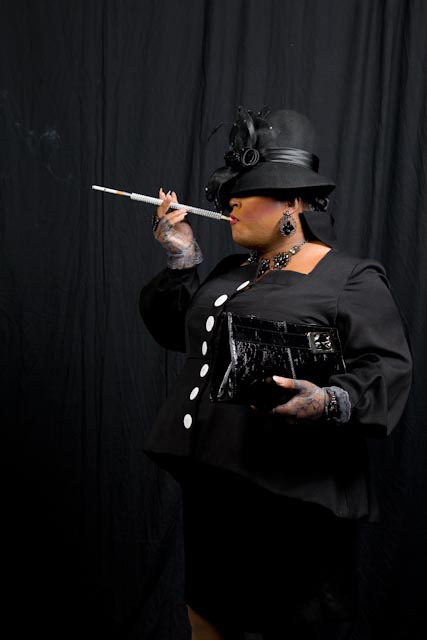
Hahnemühle Photo Rag 308, 2009. Image courtesy beta pictoris gallery.
ALC: It’s also interesting to see trends of what many young drag queens think to be what a female identity means and to see what that behavior and what that performance means, and sometimes that can be much more based on stereotypes and sometimes that can be something that’s found within and something a little more sensitive to their own femininity.
SR: It’s probably related to their mothers and their aunts, too. Real people.
ALC: Sure, yeah, and who they’re drawing inspiration from. And whether they’re drawing inspiration from actual women or from other drag queens, because there is this kind of, “This is how a drag queen acts,” as opposed to, “This is how a woman acts,” and different drag queens take inspiration from different mixtures of those two in order to create their personas.
SR: Yes.
ALC: I like that it’s somewhat subversive, because honestly drag is subversive in many ways. It’s socially subversive, and I think that people are so used to drag at this point that the punk aspects of drag are not as obvious. I do appreciate that that’s there, and part of the reason for picking an earlier image or video of RuPaul for the RuPaul Cross-Stitch Animation Workshop was that that was a time [when] RuPaul was in this very avant-garde, punk group of drag queens in Atlanta. I’m trying to link Lavonia and the other fledgling queens [whom] I’m documenting because I see a similar type of outsider. I like having them together in the same show, referencing RuPaul as this history of drag [figure], as a mentor, a role model, someone who came before and has done this before just to add a context. I don’t want to say that these drag queens … I’m documenting are doing something completely new that no one has done before. I don’t think that’s the case. I think that they’re doing some things that are new, and that they’re pushing themselves and are moving forward on a trajectory that’s been started by other queens before them. And adding that context, having that connection, shows that drag has a history, drag has rules and knowledge and inspiration that [have] been passed down through generations of drag queens, and fostering that and highlighting that is important. I mean, these are communities; these are families. It’s not family in a traditional sense, but these drag families really are a support system and they’ve taught each other, and it’s been passed down mostly word of mouth and by working with each other over the years.
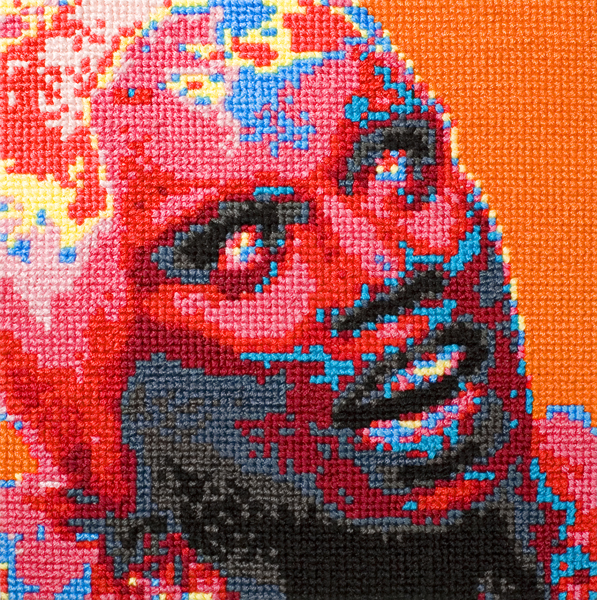
SR: Right, yeah, different communities. That’s so interesting, community is probably what most people don’t realize about drag. They think about it as just drag, an individual performer, but it is community. It sounds like it’s a lot of different communities. With the Platinum International Newcomers it’s the contestants and their dressers and their audience and their friends and supporters, but it’s all about community. It’s very interesting. It’s probably what surprised me the most when I first started seeing it.
ALC: Yeah, that idea of, when we’re together we’re family, and when we’re together this behavior is safe—this performance, this identity is accepted and welcomed with open arms.
SR: And it goes much deeper. I think you have things like family names that are, you know, like Onasus, or names that are maybe sort of funny, like SINcerity.
ALC: Is that referencing Jackie O?
SR: I would say so.
ALC: That is very old school. That is very interesting.
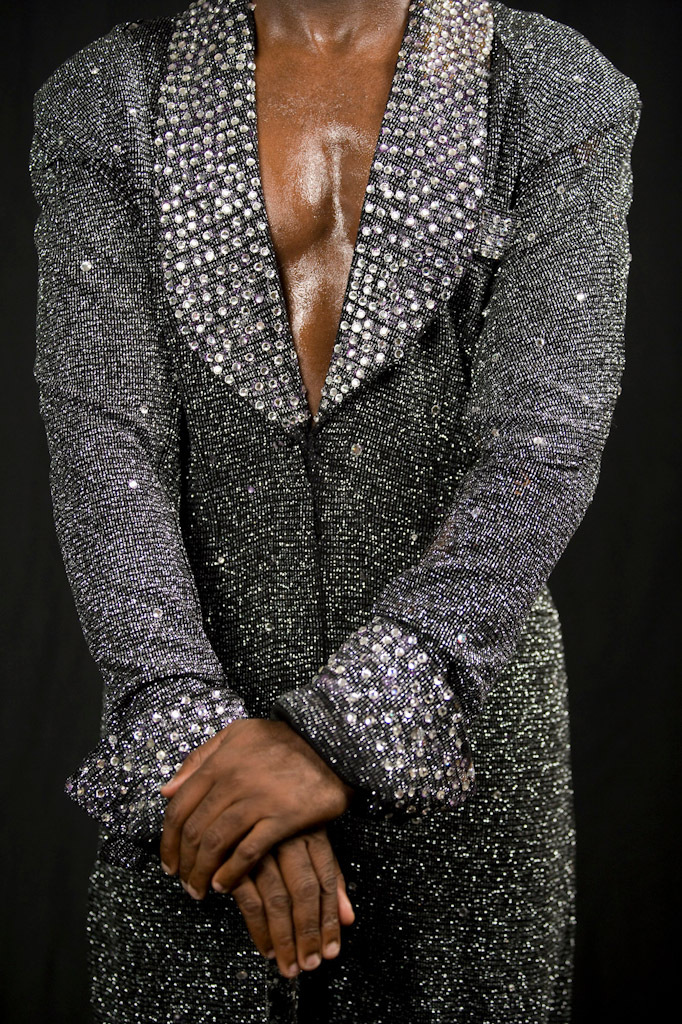
Hahnemühle Photo Rag 308, 2009. Image courtesy beta pictoris gallery.
SR: There are a lot of drag names that are funny. It doesn’t go to the deepness of the family connection that is probably there. I think that what we’ve been exposed to is that there really is something underneath that, [something] that’s very deep. Also, we talked about the sort of complete persona, that there are people [who] really have these total personalities. Triniti Black is one person [whom] I’ve photographed whose sexuality is totally unquestioned because her personality is so clear and so strong. It’s around the clock, and I don’t think Triniti dresses as a woman all the time, I think she does dress as a man some of the time, but when she’s dressed as a woman it’s a complete personality, so it speaks to that identity issue.
ALC: Honestly, it’s just the creation of queer space.
SR: Queer space, queer home.
ALC: Yeah, queer space, queer home, I love that.
SR: You see it in terms of queer space, I see it in terms of people trying to create their own space, their own identity, but that’s exactly what it is: It is queer space.
ALC: Any space can be queer space. Something has to activate the space to [make it] become queer space.
SR: I’m just overwhelmed by the whole concept of queer space. I think that’s what I’ve been seeing, you know? Or I got to step in it, I guess, for a while. When I stepped into that dressing room, I stepped into queer space.
Sister Cities: A Conversation on Documenting Drag in Birmingham and Atlanta
Related Stories
Reviews
Reviews
Reviews
A Landscaped Longed For: The Garden as Disturbance at the Crisp-Ellert Art Museum, St. Augustine
Christopher Stephen reviews the visual metaphors of the garden found in A Landscape Longed For: The Garden as Disturbance at the Crisp-Ellert Art Museum, St. Augustine.
Orchid Daze by Lillian Blades at the Atlanta Botanical Gardens
Blake Belcher reviews Atlanta-based Bahamian artist Lillian Blades' new work engaging orchids, transplantation, and diaspora at the Atlanta Botanical Garden.
As for me, I’m just passing through this planet at Bad Water, Knoxville
Harrison Wayne reviews the entangled sculptures and taxidermic specimens found in As for me, I’m just passing through this planet at Bad Water, Knoxville.



